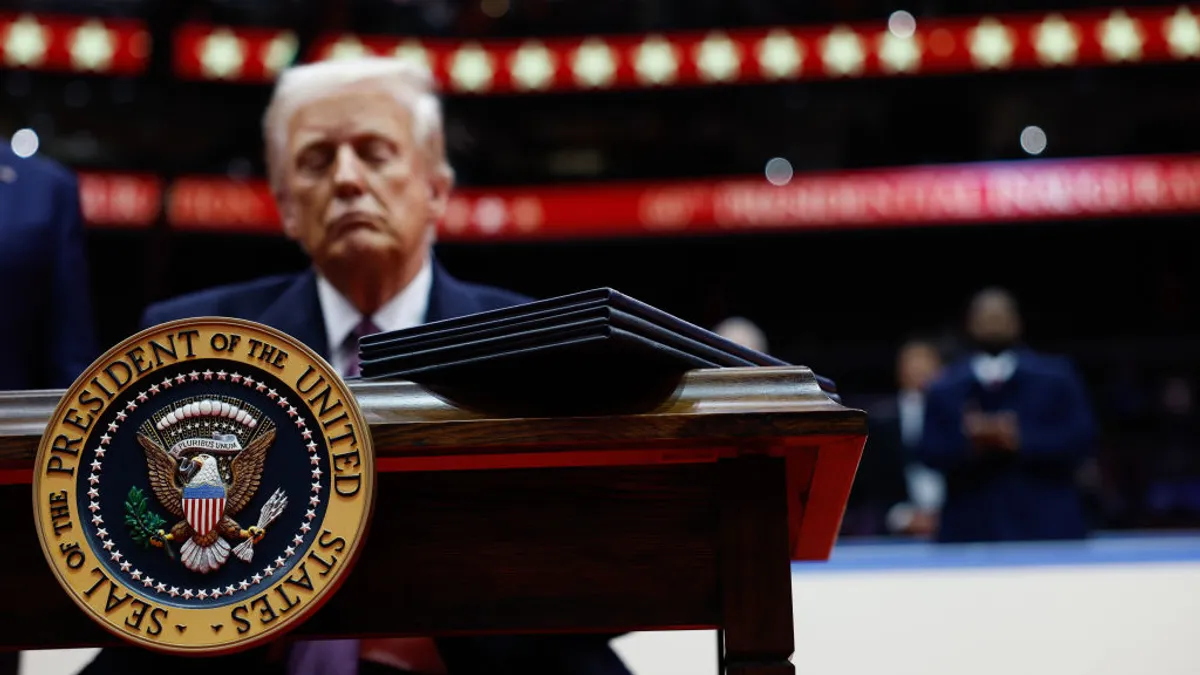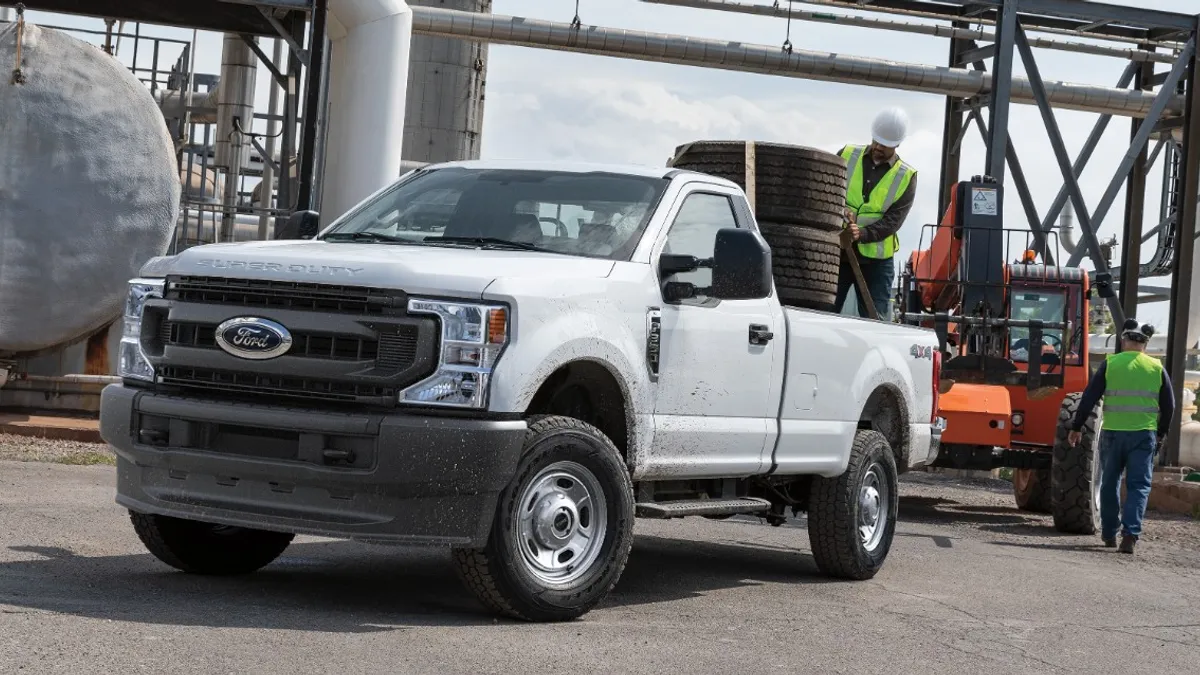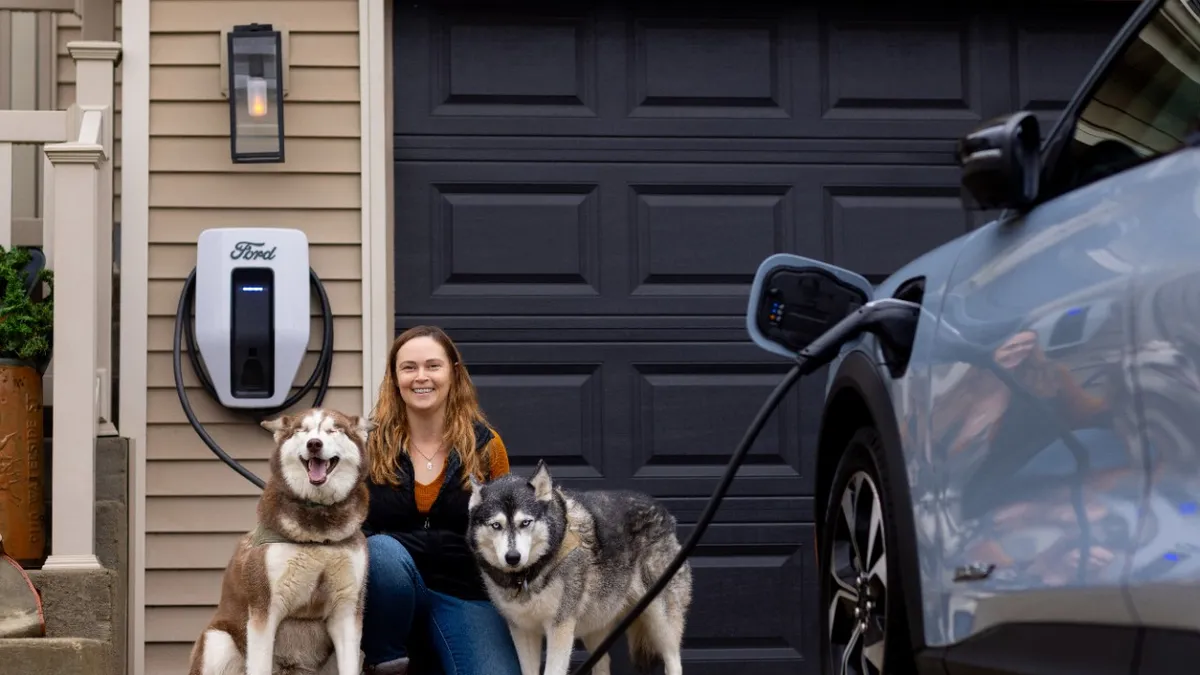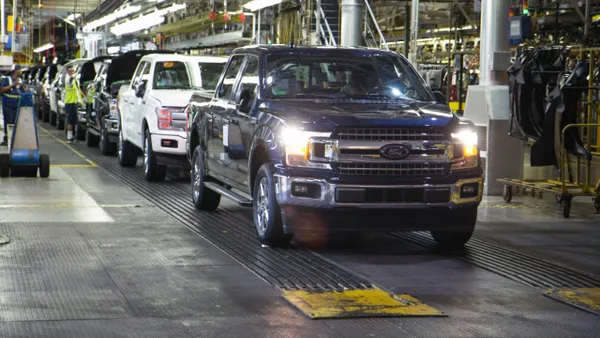A wave of executive orders signed by President Donald Trump on Monday is unlikely to slow adoption of electric vehicles but could keep gas and diesel-powered vehicles on U.S. roads longer, analysts say.
Trump’s actions will ease emissions rules and pause disbursement of federal funding for charging infrastructure. The administration also repealed targets established by former President Joe Biden that 50% of new vehicles sold be zero-emission by 2030 and could end EV tax credits for consumers.
Trump also ordered a review of U.S. trade policy, ahead of planned tariff hikes, which would have wide ranging impacts on imported vehicles and automotive parts, many of which are sourced from Mexico.
Trump’s actions carry significant implications for the automotive industry — here are four of the top takeaways shared by experts interviewed by Automotive Dive.
Electric vehicle adoption
Consumers — rather than regulations — drive the pace of EV adoption, said Stephanie Brinley, S&P Global Mobility associate director of Auto Intelligence, in a phone interview.
However, what could influence consumers on the fence about buying an EV are available incentives and whether charging networks will continue expanding now that Trump has paused funding for those programs, Brinley said in a follow-up email.
“That decision can be made more easily if you’re confident in local or regional infrastructure and if the consumer feels like they’re getting a deal,” she said. “Those changes can slow EV adoption.”
While a new EV adoption policy is in place, S&P Global projects sales of EVs in the U.S. will continue rising, though at a slower pace. S&P Global Mobility revised its projection that EVs would represent about 25% of U.S. light vehicle sales by 2030, down from its December forecast of 30%, Brinley wrote in a blog post on Tuesday.
Tax credits that led to billions in private investments in battery manufacturing and reducing dependency on imported raw materials for EV batteries will likely survive under the new administration, Brinley said in the blog post.
What this means is automakers will continue with plans to retool for domestic EV production, she said. Automakers including Honda and BMW have previously expressed this strategy following Trump’s election win.
“Ultimately, if we want to see more electric vehicle adoption, we’re going to continue to see more production in the U.S.,” Brinley said.
Fate of EV tax credits
Experts fully expect consumer tax credits for EV purchases and leases made available through the Inflation Reduction Act to disappear.
Any move to eliminate the $7,500 tax credit for EV buyers would likely hurt EV demand and profitability for automakers including Tesla, Ford Motor Co. and General Motors, said Jay Cushing, senior bond analyst with Gimme Credit, in an email to Automotive Dive.
Good news for gas-powered vehicles
Established automakers including Ford and GM, who both have a long-history of producing gasoline and diesel fueled vehicles, will likely benefit from Trump’s policies to ease emissions rules, Cushing said.
“GM and Ford have plenty of more profitable gas-powered vehicles to fall back on so it is likely that any shift in mix from EV to ICE would be profit enhancing for Ford and GM over the near term,” he said.
The implications of tariffs
Even if production of gas-powered vehicles increases or stabilizes in the near term, tariffs would be problematic for automakers, experts say. Although Trump did not sign an executive order implementing tariffs on his first day in office, he recently threatened to implement additional tariffs on China, Mexico and Canada as soon as Feb. 1.
“The 25% Mexican tariff would be a headwind for many automakers including Ford and GM as they source a significant amount of parts and production from Mexico,” Cushing said in an email.
Though Trump has expressed a desire for swift action, S&P Global expects no changes until the renegotiation of the United States-Mexico-Canada Agreement in 2026, Brinley said in her blog post.
“A tariff against the U.S. neighbors and long-standing trading partners might be a nuanced tool rather than a sledgehammer, with specific industries targeted and exemptions for others,” she wrote.












